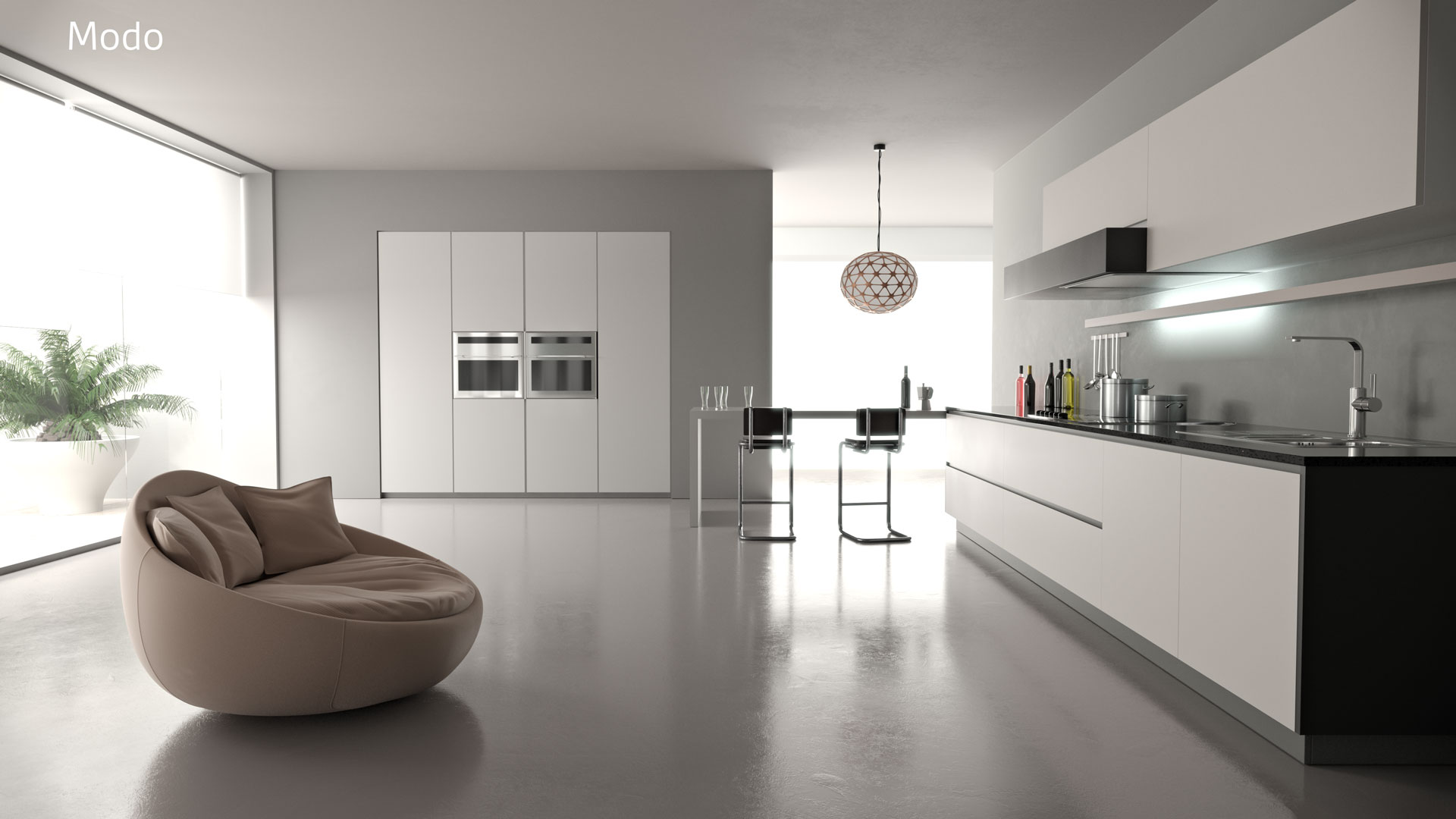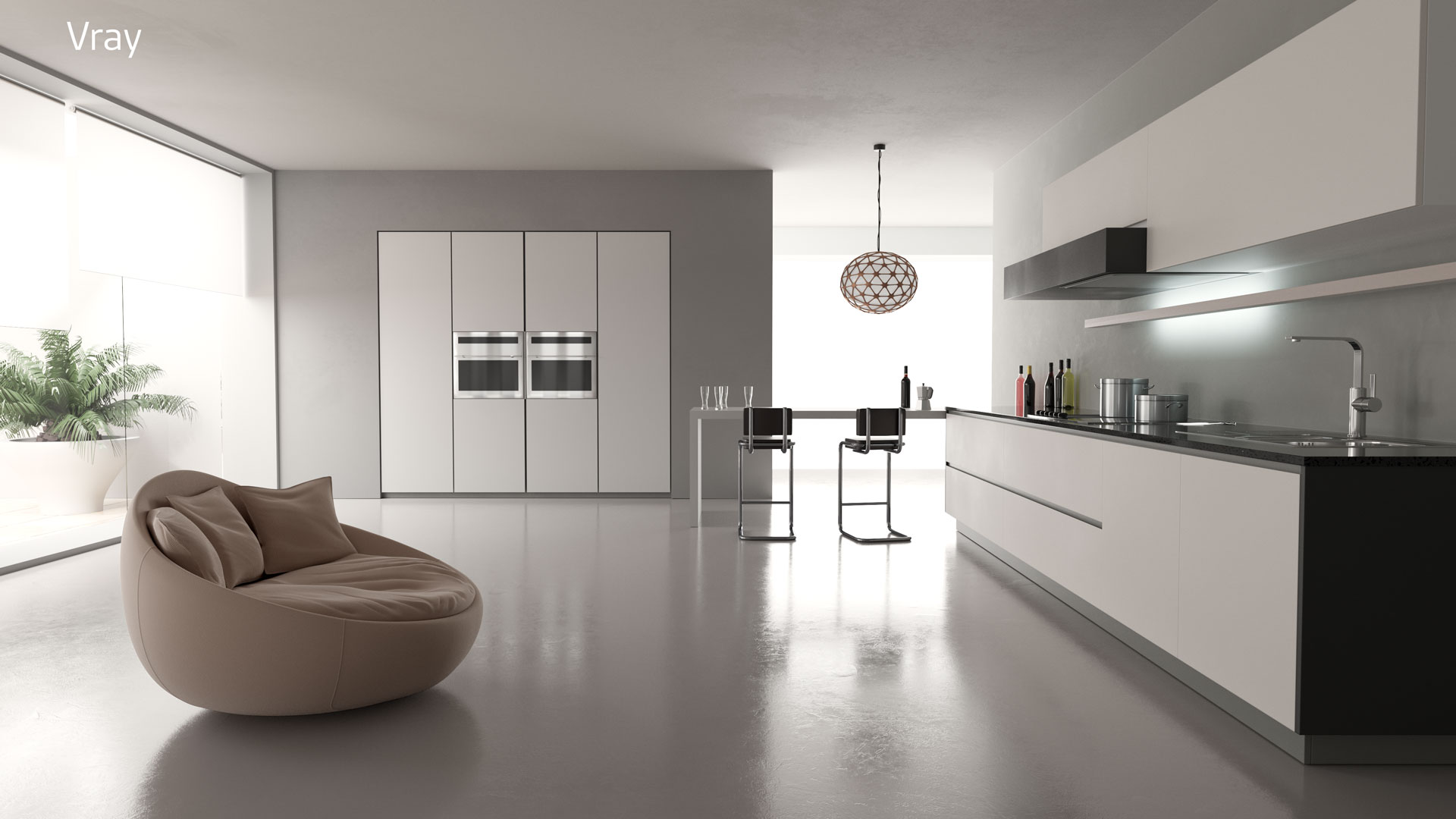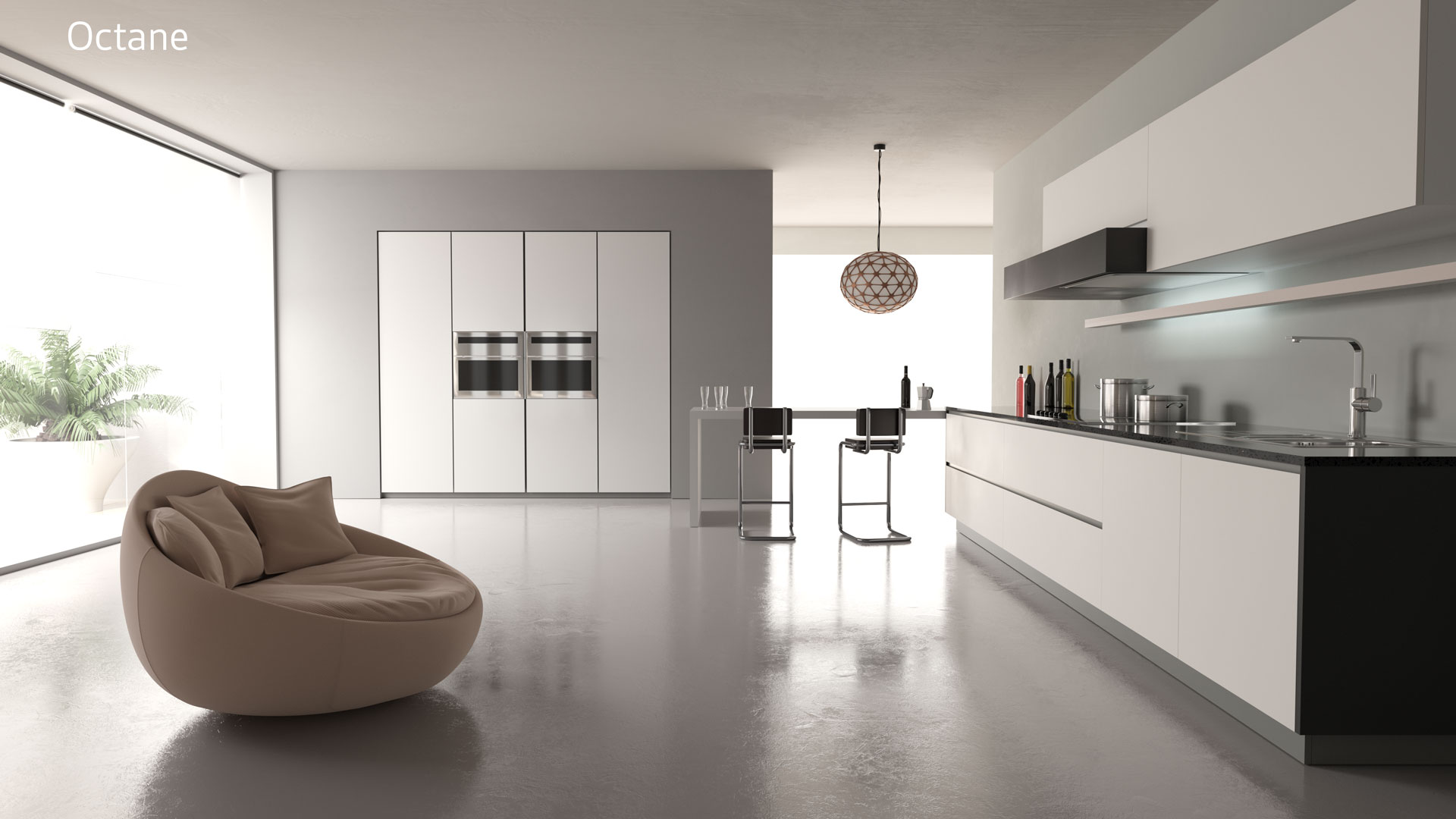Why Modo?
In the arena of 3D software Modo is very much a niche, it doesn't have the name recognition of Maya, or the ubiquity of 3D Studio Max, or even the widespread adoption of Cinema 4D. The best that can be said about Modo is that it has a small but loyal following, but it certainly doesn't have the mindshare of the bigger programs it competes with.
So why do I use it, and why do I stick with it?
Well there's two reasons. The first is that for what I do, Modo is actually amazingly good. The second is more prosaic, but just as valid, which is that in the current marketplace Modo is simply the best value proposition around, aside from Blender of course.
So let's look at pricing first: currently to use Maya or Max as a freelancer in the UK, I would be looking at costs of £1740 every year, just to rent the software (ownership is not an option, rental is the only legal means of using either app). So assuming people aren’t pirating (and obviously a great many people presumably are), how can anyone working as an independent justify that kind of expense?
To make a direct comparison, the rental option for Modo is £599 a year.
But of course Modo is also available as a perpetual license (£1799 with a £406 annual maintenance plan). Maintenance is included for the first year, so the maintenance cost kicks in after that and is comparable to upgrading yearly (there is a penalty for letting maintenance lapse, but it makes sense to stay current if you use the software professionally). But basically for £50 more than the yearly rental cost of an AD app, you get a perpetual license of Modo, which you can then maintain for less than 25% of the cost of renting AD software.
Maybe the Foundry could have been bolder with the subscription pricing for Modo, it’s possible they could have taken a bigger slice of the market if the rental price had been lower, if the price had been low enough to cause a splash in the industry. However the price is reasonable, and means that for new users Modo should offer least a worthwhile value proposition compared to the competition.
Existing users are presumably all on maintenance rather than rental, and of course the many people who dislike the very idea of renting software would opt for maintenance rather than subscription, but in this market subscription is becoming the norm, thanks to Autodesk. So the question remains: who the hell is paying the prices that Autodesk is asking? Is everyone in the 3D industry so rich that money is no object? I have to say that the economics in play are a mystery to me, but from where I’m standing it looks like a no-brainer. Maya is undeniably more powerful than Modo, but the price is considerably higher.
Which brings me back to the first point: for my purposes Modo is damn good at what it does.
So what are Modo’s strengths, and what makes it so good for a freelancer?
Modo is a great modelling app. That’s how it made its name, and it completely changed the industry for the better because all its competitors copied the workflow. The reason you have decent modelling tools in Maya and 3DS Max is because Modo “inspired” them. I started my 3D journey with Max, and modelling was a deeply painful experience back then. But after switching to Modo it became a lot more enjoyable. For both organic and hard surface modelling Modo is just plain great. Pair it with Zbrush and you can do anything.
Modo also has a fantastic UV toolset, excelling at organic and hard surface models. You can better it with a third-party application like Rizom Unfold 3D, but it’s damn close.
Modo has a great native render engine. Seriously, this thing is beautiful. It is in most respects as good as Vray. Vray does have a couple of production advantages, and a more flexible GI engine that will allow you to render tricky interiors faster, but in terms of the look you get Modo is the equal of Vray. And of course Vray itself is available as a third-party render engine for Modo, along with Octane.
Modo also has a great shading system. I prefer shading in Modo than in any other application, and I prefer the Shader Tree to nodes, because it’s a lot faster to set up. The Shader Tree is also immensely flexible once you get to know it. Modo’s materials are presented in a simple straightforward way that makes creating shaders a breeze. Shading in Modo is the equal of any render engine anywhere IMO.
So for the sake of comparison let me give some concrete examples. This kitchen scene was originally created in Modo, and then converted to Vray and Octane afterwards. Compare the renders, and despite some minor differences you can see that in terms of actual quality, there is simply nothing to choose between Modo, Vray, and Octane. All three engines are capable of delivering great results.



For rendering stills Modo excels. It gives great results and the workflow is efficient and fast. The software is for the most part a joy to use. I think that people who aren’t familiar with it simply don’t realise how powerful the app can be for certain tasks. Let me give you an example: I’ve done a lot of work in the advertising industry, where (in London at least) Cinema 4D completely dominates. I think the reason for Cinema 4D’s success in the advertising industry is down to the fact that they were one of the first 3D programs available on the Mac, and they simply captured the market (pretty much the whole of the UK advertising industry is Mac-based, in the creative departments at least). But while Cinema 4D really excels at motion graphics work, it just isn’t as strong as Modo for rendering beautiful stills and product shots.
When I freelanced at agencies in London and I used Modo people were invariably amazed by how fast I could work, compared to what they were used to seeing. This was mainly down to the fact that I would have the Preview renderer working so I could adjust my materials and lighting interactively, without ever needing to do test renders to see how my scene was coming along (but as with modelling, the competition is now catching up when it comes to interactive rendering). The other thing that would get noticed was the quality of the renders: the shading, lighting and GI were always better than what the clients were used to getting on these fast turnaround, high-pressure jobs. For motion graphics Cinema 4D undoubtedly beats Modo, but for stills, and especially product shots (which represent a huge proportion of advertising jobs) Modo is hands down a better option.
So if Modo is so good, why doesn’t it have a greater share of the market? To be honest, I don’t know. It’s cheaper than C4D, and for stills it’s a better option. Motion Graphics work is actually only a relatively small portion of the overall 3D industry, but Modo just hasn’t got the mindshare in the market that the competition has, and it’s a shame, because it’s a very capable package that could make a lot of artists’ lives easier.
Does it have faults? Yes of course, and they are for the most part well-known. Where Modo struggles is with performance, particularly with deformers and also with heavy scenes that have thousands of items. In these scenarios working with Modo can be extremely frustrating, and these issues are a real weakness for the app. The other big issue is the lack of third-party support, but here you have a chicken and egg problem: without a bigger market share plugin developers won’t be tempted to support Modo, but without more third-party support it’s difficult for Modo to grow.
But I do wonder, even if the Foundry was to resolve these issues, would Modo gain more traction in the marketplace? Or is the issue psychological? Are users simply more likely to be attracted to the bigger and better known names, and less likely to choose the niche product? Of course they are, we are all human and no-one has the time to throughly research and demo every option, so it makes sense to choose the better known brand, especially if you are looking to get employed in which case the mainstream package is the only sensible option.
But this brings me back to the freelancers, the independents: why would they not choose Modo, especially if they are rendering stills. Considering the prices that the competition are charging, and the quality Modo undoubtedly has to offer, I think that for anyone running a business that involves 3D Modo has got to be worth considering.